The biggest mistake most state education agencies (SEAs) make is not a matter of policy but of mindset: Too many assume their primary function is to monitor compliance with state and federal laws rather than be agents of change that materially impact the lives of students.
Given that state agencies were born of the necessity to distribute and monitor federal dollars when ESEA and IDEA were created in the 1970s, it makes sense that they see themselves this way. However, if we want to achieve big things for kids today, the SEAs must change. Every SEA in the nation will have to evolve to lead a unifying vision and help focus districts on the things that matter most. As the current administration redefines the federal government’s role in steering educational priorities, it’s time for states to redefine their roles, too.
When we helped lead the Louisiana Department of Education from 2011 to 2020, for example, we started with the assumption that it was our job to influence classrooms and improve student achievement. This led us to orient all our state “levers,” or the influencing mechanisms states have at their disposal, such as funding, accountability, standards, regulations, communication, and support, to change what kids experienced in the classroom.
Our measures of success were not just student outcomes—don’t get us wrong, outcomes are extremely important—but also classroom experience. We created a clear vision for the kind of instruction we wanted kids to have in the classroom and outlined the actions that every player in the implementation chain, from the state house to the student, would need to take to make that vision a reality. We proved that when you set a clear goal for classroom experience, student outcomes follow.
Three ways state agencies can become better drivers of improvement
1. Create focus.
The number-one thing states need to do is pick the top three or four priorities that matter most to improve student achievement, and then specifically name what educators need to do to make these priorities come true.
Given recent NAEP scores, we imagine that every state is prioritizing the improvement of literacy and numeracy outcomes.
We know what works to improve these outcomes: high-quality curricula, support for teachers, and streamlined assessments. Point everything you do toward achieving these priorities, and clear out the noise by eliminating, deprioritizing, and minimizing the impact of other things that distract from your main goal. In Louisiana, we stopped doing training on anything that didn’t align with our priorities, stopped giving districts money to do anything unaligned with our priorities, and even stopped emailing districts about anything that wasn’t pertinent.
States can and should be relentless about ensuring that districts take the steps needed to see the classroom experience change. Spend your energy making sure every classroom in every school is supported to deliver what works, and you’ll see student outcomes improve, too.
2. “Make the Right Choice the Easy Choice” and respect local control.
In our role as advisors to state agencies across the country, we too often see states saying, “We can’t do that because we’re a local control state.” “Local control” is the mantra in blue states and red states alike, but you can respect local control and believe it’s the state agency’s role to change the classroom experience.
When you put out 30 state grants with 30 budget requirements on 30 timelines, for example, or have an accountability system that districts don’t understand, or mandate low-quality tests, you undercut the ability of local leaders to lead. Every lever you have — whether it’s funding, accountability, or regulations — can create coherence or confusion, so fight to make the right choice the easy choice. Redirect grant money to incentivize good choices. Celebrate districts that are doing things right. And curate lists of what the “right choice” is, whether school districts are looking for products, services, or vendors.
In Louisiana, we did this by creating the Super App, a way for districts to submit just one application and receive one pool of money to achieve a cohesive vision. No more piecing together district budgets from a smattering of funding streams. As a result, all districts but one switched to high-quality instructional materials and professional learning in year one.
3. Don’t let federal grant requirements cloud the view of your North Star.
This one is likely to change under the Trump administration, but it’s too common not to mention. SEAs are often so beholden to the requirements of federal and state grants that they lose sight of what matters most. When we suggest to state agencies, “Maybe you should stop doing X and start doing Y,” they say, “Well, that’s not allowed in this program.”
We’re not telling states to throw caution to the wind and run afoul of the law. Rather, we encourage them to recalibrate the way they think about spending money so that their dollars align with their objectives, not with random grant requirements. There’s more flexibility than states realize, so look for ways to make grants work for you. To quote Steven Covey, “Keep the main thing the main thing.” Again, the Super App helped us stay focused on the main thing in Louisiana.
States like Louisiana and Mississippi are proof that SEA leaders can be powerful drivers for change when they lean in. Make sure you have a vision to incentivize and motivate district action, not just a plan for more dollars in support of more of the same.
Kunjan Narechania and Jessica Baghian are the CEO and President of Watershed Advisors. They also write a weekly LinkedIn newsletter called The Delta.
Grounded in CRPE’s core belief that public education is a goal, not a particular set of institutions, this series begins with exploring what shape a revamped federal role in education might take. Future posts will examine the evolving responsibilities of states and local communities. This series is a forum to challenge assumptions, spark debate, and generate ideas for preparing today’s and tomorrow’s students for a rapidly changing, uncertain future.





